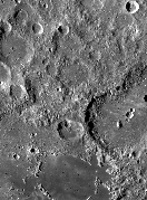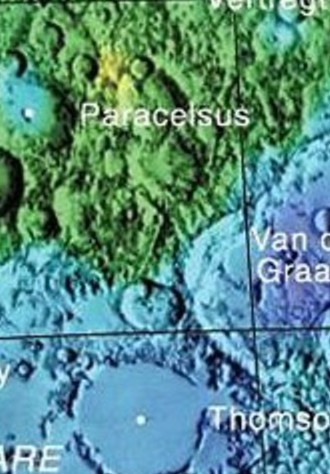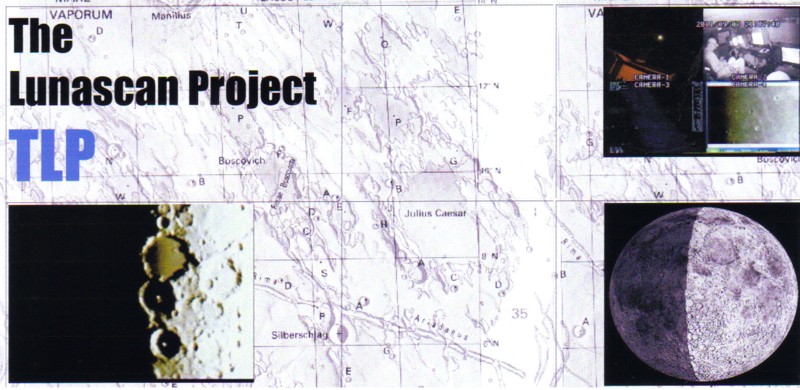|
|
presentsVAN DE
GRAAFF |
 ...
...
Left. Ridge Section 141; Right: Cropped 1200 dpi USGS
color chart cropped for same
section
Larger expanded version of color chart above
USGS Chart 2030S-160180
Lunascan Project composite of Sections 141,142,151,152
LAC/WAC 104 in pdf
LAC/WAC 119 in pdf ***
27.4_S_172.2_W
Updated 20170205
Anomalies discovered in Paracelsus C and Mare Igeneii. See You Tube "flyovers" below.
Van de Graaff is a 233 km wide, unusual lunar formation, 4
km deep, that has the appearance of two merged craters,
approximately in a figure eight shape with no intervening rim
separating the two halves. Of recent interest is the
find in Paracelsus C (***) of two extremely interesting
"structures". Paracelsus is an impact crater located to the
east of the crater Barbier, and to the SW of the large walled
plain Vertregt. To the south is the Mare Ingenii (out of
frame), one of the few lunar maria on the far side. Along the
eastern rim of Van de Graaff is Zelinsky and the lava flooded
Thomson is to the SW near the bottom of our Section. It can be
seen in high res in the LAC/WAC 119 pdf . *** The crater
Birkeland (Section 142) is attached to the southeast rim,
nestling against the slightly narrower "waist" of the
formation. To the north is Aitken (Section 130), and Nassau
(also Section 142) lies to the east. The outer rim has some
terracing along the southwest wall, but is generally in a worn
and eroded state. A pair of craterlets overlay the southeast
rim, next to Birkeland. There are also several small craters
on the interior floor of Van de Graaff. The southwest section
has a central peak, while the northeast floor is slightly
smoother in form. Orbital studies of the Moon have
demonstrated that there is a local magnetic field in the
vicinity of this formation that is stronger than the natural
lunar field. This is most likely an indication of volcanic
rock underneath the surface. The crater also has a slightly
higher concentration of radioactive materials than is typical
for the lunar surface. The crater walls in the vicinity of Van
de Graaff display an unusual grooved texture. This region lies
at the antipode of the Mare Imbrium impact site, and it is
thought that powerful seismic waves from this event converged
at this point. Most likely this energy created the grooved
appearance as the tremors triggered landslides, although the
grooves may also have been formed by deposited clumps of
ejecta from the impact. (Credit: Most of the information used
in this section feature descriptions was obtained from
wikipedia.org. Section 141 and this directory was created by
Fran Ridge and Ned Haskin of The Lunascan Project).
USEFUL TOOLS:
